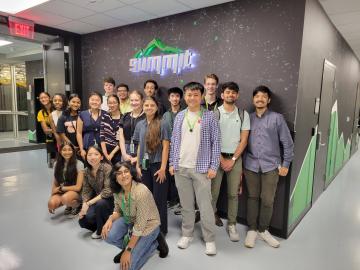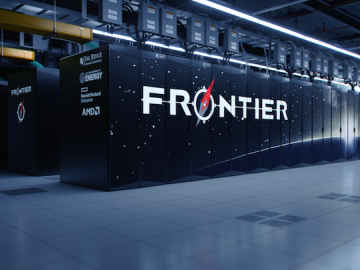Filter News
Area of Research
- (-) Isotopes (21)
- (-) Supercomputing (153)
- Advanced Manufacturing (5)
- Biological Systems (1)
- Biology and Environment (102)
- Biology and Soft Matter (4)
- Building Technologies (2)
- Chemical and Engineering Materials (3)
- Chemistry and Physics at Interfaces (7)
- Clean Energy (168)
- Climate and Environmental Systems (7)
- Computational Biology (1)
- Computational Chemistry (5)
- Computational Engineering (1)
- Computer Science (3)
- Data (1)
- Earth Sciences (1)
- Electricity and Smart Grid (1)
- Energy Frontier Research Centers (7)
- Fuel Cycle Science and Technology (2)
- Functional Materials for Energy (8)
- Fusion and Fission (32)
- Fusion Energy (7)
- Geographic Information Science and Technology (1)
- Materials (122)
- Materials for Computing (13)
- Materials Synthesis from Atoms to Systems (8)
- Materials Under Extremes (7)
- National Security (45)
- Neutron Data Analysis and Visualization (2)
- Neutron Science (72)
- Nuclear Science and Technology (27)
- Quantum Condensed Matter (3)
- Quantum information Science (4)
- Renewable Energy (2)
- Sensors and Controls (2)
- Transportation Systems (4)
News Type
News Topics
- 3-D Printing/Advanced Manufacturing (2)
- Artificial Intelligence (21)
- Big Data (13)
- Bioenergy (3)
- Biology (6)
- Biomedical (10)
- Biotechnology (1)
- Buildings (2)
- Chemical Sciences (1)
- Climate Change (12)
- Computer Science (45)
- Coronavirus (7)
- Cybersecurity (2)
- Decarbonization (3)
- Energy Storage (1)
- Environment (13)
- Exascale Computing (12)
- Frontier (13)
- Grid (1)
- High-Performance Computing (20)
- Isotopes (15)
- Machine Learning (7)
- Materials (6)
- Materials Science (9)
- Mathematics (1)
- Microscopy (2)
- Nanotechnology (5)
- National Security (4)
- Net Zero (1)
- Neutron Science (6)
- Nuclear Energy (4)
- Physics (3)
- Quantum Computing (10)
- Quantum Science (10)
- Security (1)
- Simulation (10)
- Software (1)
- Space Exploration (3)
- Summit (21)
- Sustainable Energy (3)
- Transportation (3)
Media Contacts

The 21st Symposium on Separation Science and Technology for Energy Applications, Oct. 23-26 at the Embassy Suites by Hilton West in Knoxville, attracted 109 researchers, including some from Austria and the Czech Republic. Besides attending many technical sessions, they had the opportunity to tour the Graphite Reactor, High Flux Isotope Reactor and both supercomputers at ORNL.

A team of computational scientists at ORNL has generated and released datasets of unprecedented scale that provide the ultraviolet visible spectral properties of over 10 million organic molecules.

Research performed by a team, including scientists from ORNL and Argonne National Laboratory, has resulted in a Best Paper Award at the 19th IEEE International Conference on eScience.

This summer, ORNL welcomed more than 500 students to campus through the lab’s range of internship programs, which are offered in areas such as biology, national security and computing.

Scientists at ORNL used their knowledge of complex ecosystem processes, energy systems, human dynamics, computational science and Earth-scale modeling to inform the nation’s latest National Climate Assessment, which draws attention to vulnerabilities and resilience opportunities in every region of the country.

How the Frontier team broke the exascale barrier to launch a new supercomputing era for scientific discovery.

The team that built Frontier set out to break the exascale barrier, but the supercomputer’s record-breaking didn’t stop there.

Making room for the world’s first exascale supercomputer took some supersized renovations.

The world’s first exascale supercomputer will help scientists peer into the future of global climate change and open a window into weather patterns that could affect the world a generation from now.

Raina Setzer knows the work she does matters. That’s because she’s already seen it from the other side. Setzer, a radiochemical processing technician in Oak Ridge National Laboratory’s Isotope Processing and Manufacturing Division, joined the lab in June 2023.




